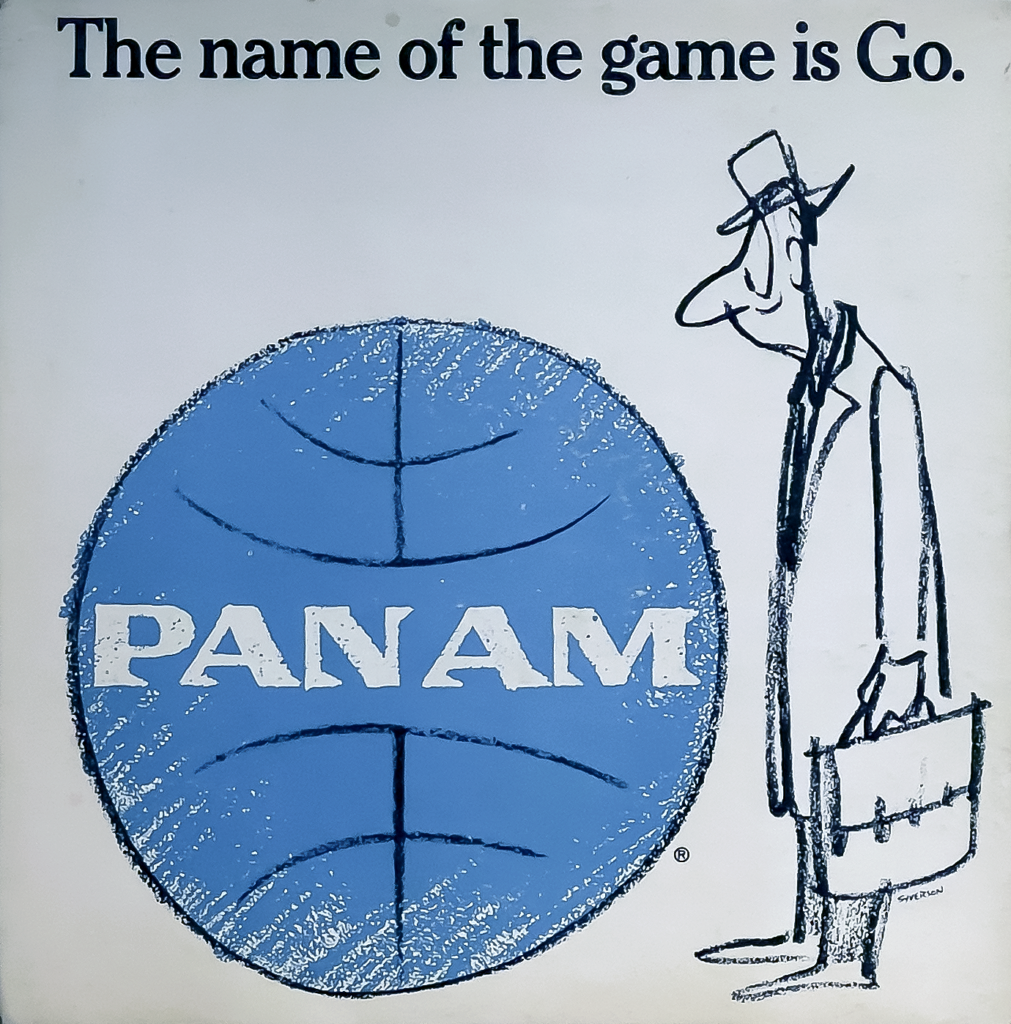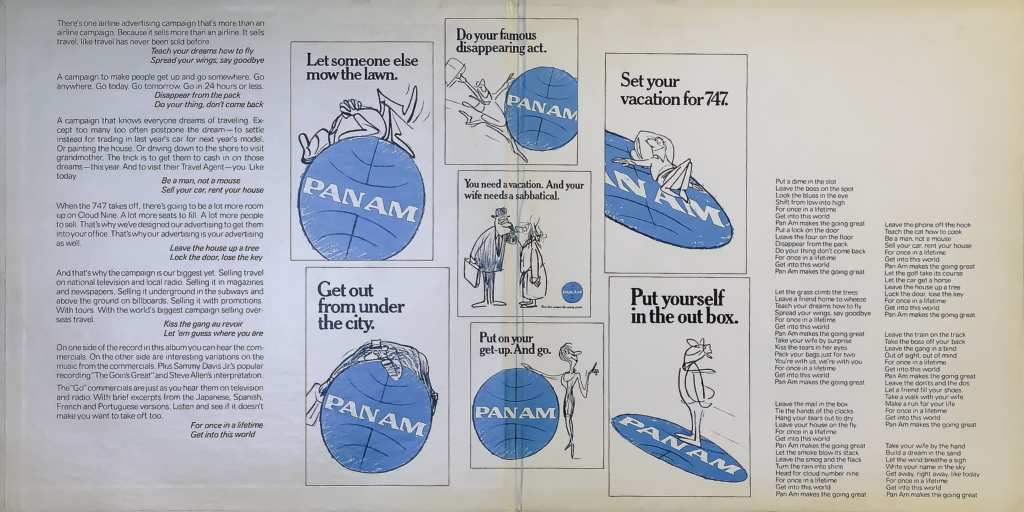Welcome to Finnley’s Audio Adventures! I am Finnley the Dolphin, your trusted guide on a journey through the fascinating world of unique audio recordings. In today’s adventure, we dive deep into the rich history of Pan American World Airways, better known as Pan Am. This iconic airline was more than just a mode of transportation; it was a symbol of innovation, adventure, and the golden age of air travel. Join me as we explore the remarkable story of Pan Am, its groundbreaking contributions to aviation, and the enduring legacy it left behind.

As we embark on this audio adventure, we’ll uncover the fascinating tale of Pan American World Airways, commonly known as Pan Am. This airline wasn’t just about getting from one place to another; it represented a chapter in the history of innovation, a saga of exploration, and the embodiment of the romantic allure of aviation. Join me as we step into the golden age of air travel and explore the remarkable journey of Pan Am, a journey that began in 1927 and left an indelible mark on the world of aviation. So, dear listeners, fasten your seat belts, ensure your tray tables are locked, and your seat back is in the full upright position as we get ready to take off for an unforgettable voyage through time.
Pan American World Airways, commonly known as Pan Am, stands as a quintessential symbol of the golden era of air travel, embodying American innovation, exploration, and the romantic allure of aviation. Founded in 1927, its history until 1991 reflects an expansive journey that significantly shaped the development of global aviation. Pan Am was not just an airline; it was a testament to human aspiration, connecting distant corners of the world and making air travel a reality for the masses.

As an aviation trailblazer, Pan Am was instrumental in introducing many technological and operational advancements. It was a pioneer in establishing international routes, thereby fostering global connectivity. The airline’s story intertwines with key historical events, technological breakthroughs, and the evolving dynamics of global travel and commerce. From launching the first transatlantic and transpacific flights to popularizing the jetliner, Pan Am’s influence stretched beyond the skies into shaping international relations and cultural exchanges.
During its operational years, Pan Am was known for its luxurious service, exemplifying the glamour and excitement associated with air travel during the mid-20th century. It set standards in passenger comfort, in-flight service, and aviation safety, contributing significantly to the modern air travel experience. Pan Am’s impact on popular culture was profound, with its iconic blue globe logo and uniform becoming symbols of sophistication and adventure.
Pan Am’s history is also a narrative of resilience and challenges. It faced economic upheavals, changes in the regulatory environment, competition, and technological shifts. The story of Pan Am reflects the airline industry’s highs and lows, embodying the spirit of an era marked by rapid technological progress and changing socio-economic landscapes.
Pan Am was the brainchild of Juan Trippe, a visionary in the field of aviation, and other pioneering individuals. In 1927, they embarked on a journey that would change the course of aviation history. Initially, Pan Am’s focus was on mail delivery, seeking to revolutionize the way correspondence traversed the globe. However, Juan Trippe’s vision went beyond postal services; he envisioned a world where passengers could explore the skies, connecting continents and cultures.
As the airline industry began to take shape, Pan Am played a pivotal role in establishing the foundations of international air travel. It wasn’t long before the airline expanded its scope to include passenger services, marking a significant shift in the way people experienced the world. Pan Am’s commitment to innovation, operational excellence, and global expansion laid the groundwork for the modern global airline industry.
Pan Am’s journey during its formative years was marked by bold experimentation and exploration. The airline sought out new routes, often charting uncharted territories. Notably, Pan Am became the first airline to launch transatlantic and transpacific passenger flights, pushing the boundaries of what was considered possible in air travel.
These early years saw Pan Am develop the operational expertise, technology, and infrastructure needed to deliver safe and reliable long-distance flights. The airline’s pioneering spirit extended beyond aviation, as it actively contributed to the development of aviation infrastructure, from airports to navigation systems.
As Pan Am’s global presence expanded, it became synonymous with adventure, luxury, and exploration. The airline’s iconic blue globe logo and its iconic stewardesses’ uniforms became symbols of sophistication and modernity, defining the era’s perception of air travel.
The 1930s and 1940s represented the pinnacle of Pan American World Airways, often referred to as Pan Am. During this golden era, the airline achieved remarkable milestones, shaping the course of international aviation.
Pan Am made aviation history in the 1930s by introducing transoceanic routes, revolutionizing long-distance travel. The cornerstone of this achievement was the iconic Clipper service. These flying boats, adorned with the Pan Am logo, became synonymous with luxury and adventure. Passengers embarked on journeys that combined comfort with the thrill of exploring distant lands.
The Clipper service offered amenities previously unheard of in air travel, featuring dining rooms, lounges, and even sleeping facilities. This level of opulence set a new standard for international flights and left an indelible mark on the world of aviation. The aircraft used for these routes, such as the Boeing 314, were marvels of engineering, capable of long-haul flights over vast stretches of ocean.
As World War II engulfed the world, Pan Am’s expertise and fleet took on an entirely new role. The airline played a crucial part in supporting Allied operations during the conflict. Pan Am’s vast network of routes and operational capabilities became invaluable assets in wartime.
Pan Am’s flying boats were converted into military transports, carrying troops and supplies to distant battlefronts. These aircraft were instrumental in bridging the vast distances of the Pacific Theater, connecting vital supply lines and military bases. The airline’s crews displayed unwavering dedication and bravery, often operating in challenging conditions.
Pan Am’s wartime efforts extended beyond transportation. The airline also engaged in intelligence activities and provided crucial data on weather patterns and navigational information for military operations. Its contribution went far beyond the realm of commercial aviation, making it an integral part of the war effort.
The 1950s marked a transformative period for Pan American World Airways as it embraced the dawn of the jet age with the introduction of the Boeing 707. This era ushered in a new chapter in aviation history and saw Pan Am emerge as a pioneering force that expanded its global reach, connecting continents and cultures like never before.
The Boeing 707, a revolutionary jetliner, represented a significant leap in aviation technology. With its powerful jet engines, it offered unprecedented speed and efficiency compared to the propeller-driven aircraft of the past. Pan Am became the launch customer for the Boeing 707, underlining its commitment to innovation and progress in air travel.
Pan Am’s fleet of Boeing 707s was used on transatlantic routes, bringing Europe and North America closer together. The ability to cover vast distances in a matter of hours, rather than days, made these flights immensely popular. Pan Am’s transatlantic services not only facilitated business and leisure travel but also fostered cultural exchanges between two continents.
The 1950s and 1960s were characterized by the jet-set era, a glamorous period of travel that captured the imaginations of people around the world. Pan Am epitomized this era, with its sleek and modern Boeing 707s becoming symbols of sophistication and luxury. Passengers experienced the thrill of jet travel, enjoying amenities like gourmet dining, spacious cabins, and attentive service.
Pan Am’s expansion into international routes had a profound impact on global connectivity. The airline connected diverse cultures and introduced travelers to new horizons. The experience of flying with Pan Am was not just about reaching a destination; it was an adventure filled with the promise of exploration and discovery.
During this period, Pan Am was not only a leader in passenger travel but also played a vital role in the development of aviation infrastructure. The airline influenced the design and construction of modern airports, ensuring that they could accommodate the growing demands of jet travel.
Pan Am’s successful embrace of the Boeing 707 solidified its reputation as an American icon of innovation and progress. The airline’s distinctive blue-and-white livery, known as “Pan Am Blue,” became instantly recognizable at airports around the world.
One of the standout features of Pan American World Airways’ history was its innovative and influential marketing efforts, notably the “Pan Am Makes the Going Great” campaign. Central to the success of this campaign was a jingle that captured the spirit of the era and became a cultural phenomenon.

The campaign’s jingle was composed by the talented Stan Applebaum, a figure well-respected in the music industry for his exceptional composition and arrangement skills. Applebaum was not just a composer but an arranger who collaborated with numerous artists, leaving an indelible mark on the music of his time. His unique ability to seamlessly blend classical elements with contemporary styles made him a highly sought-after talent in various musical genres. Applebaum’s contribution to the jingle’s composition added depth and musicality that resonated with audiences.
Working alongside Applebaum was the creative genius of copywriter Wilson Seibert Jr. Known for his ability to craft memorable and impactful advertising slogans, Seibert possessed a knack for creating phrases that captured the public’s imagination. His role in developing the jingle’s concept and lyrics was crucial in conveying the essence of Pan Am’s message – that flying with Pan Am was an experience like no other.
Upon its release, the jingle quickly gained immense popularity. Its catchy melody and memorable lyrics became synonymous with the excitement and adventure of air travel during the jet-set era. The campaign’s success extended beyond the airline industry; it became a cultural touchstone that left an indelible mark on the public’s consciousness.
Such was the jingle’s popularity that it inspired renowned artists to record their own versions. Sammy Davis Jr., known for his smooth and soulful voice, lent his talents to a rendition of the jingle. His interpretation added an extra layer of charm to the already captivating soundscape, making it a standout piece in his extensive discography.
Not to be outdone, the multitalented Steve Allen, a virtuoso on the piano, also recorded his version of the jingle. Allen’s jazz arrangement showcased his musical prowess, adding a unique twist to the beloved tune.
The jingle’s enduring appeal was further underscored when The Lettermen, a popular vocal group of the time, recorded their version of it. Their rendition appeared on the 1969 Capitol Records single “Traces / Memories Medley.” What set The Lettermen’s adaptation apart was the fact that they rewrote most of the lyrics, demonstrating the jingle’s adaptability and timeless charm.
Amid Pan Am’s iconic “Pan Am Makes the Going Great” campaign, a remarkable artifact emerged – “The Name of the Game is GO” record. This audio treasure, encased in a visually stunning sleeve, encapsulates the very essence of Pan Am’s energetic and groundbreaking spirit.
The record’s cover is a work of art, adorned with captivating artwork by the renowned artist Henry Syverson. Syverson, celebrated for his distinctive style and innovative approach to design, left an indelible mark on various publications, including Time, Fortune, and The New Yorker. His illustrations graced the pages of these esteemed magazines, showcasing his artistic prowess.
Within the intricate details of the cover’s design lies the spirit of the jet-set era, a testament to the boundless possibilities of air travel. Syverson’s artistry elevates the record to a level of sophistication and timelessness, enhancing its overall allure.
“The Name of the Game is GO” offers a captivating journey through a diverse soundscape. Each track presents a unique listening experience, from the upbeat pop rock to the lounge-inspired melodies. The album’s musical versatility mirrors the vibrancy of the era.
Yet, what truly distinguishes this album are its distinctive and memorable lyrical stylings. Lines like “teach the cat to cook” and “be a man not a mouse” imbue the lyrics with an intriguing and commanding presence, adding an extra layer of fascination.
Flipping the record to side-B reveals a stark contrast – a world of orchestral arrangements. This side of the album delivers a more sophisticated and refined sound, showcasing the prowess of musicians who contributed to its creation. The highlight is the track sung by the legendary Sammy Davis Jr., whose smooth, soulful voice enhances the album’s captivating soundscape. Additionally, the jazz arrangement by Steve Allen demonstrates his virtuosic skills on the piano.
From a technical perspective, “The Name of the Game is GO” operates at the standard speed of 33⅓ revolutions per minute (RPM), typical for long-playing records of the era. It accommodates mono systems, making it accessible to a wide range of audio equipment.
However, it’s worth noting that despite its musical and artistic achievements, the record did face some technical challenges. The stereo soundstage was not perfectly centered, and certain tracks exhibited a 13.5KHz high-frequency whine, affecting the overall listening experience. The final track on side-A, a medley of Japanese, Spanish, French, and Portuguese, appears to have been recorded in different sessions and possibly different studios, as the same high-frequency whine persists. Furthermore, the splices in the recording were evident and occasionally jarring, detracting from the overall sonic quality.
Despite these technical hiccups, the record remains a cherished relic of its time, offering a glimpse into the vibrant and creative spirit of the late 1960s. Beyond the realm of music, Pan American World Airways, commonly known as Pan Am, left an indelible mark on the world of aviation and culture. Let’s delve into the enduring legacy of this iconic airline and how it continues to influence and inspire to this day.
Pan American World Airways, commonly known as Pan Am, was more than just an airline; it was an emblem of American innovation and the golden age of air travel. Although its operations ceased in 1991, the legacy of Pan Am endures through a rich tapestry of enduring symbols, influential appearances in popular media, memorable music, and the timeless allure of Pan Am-branded merchandise. In this section, we will explore how Pan Am’s legacy continues to thrive and captivate enthusiasts around the world.
One of the most prominent symbols of Pan Am’s legacy is the iconic Pan Am Building, located in the heart of New York City. Designed by architect Walter Gropius, this towering skyscraper stands as a testament to Pan Am’s influence. Originally known as the Pan Am Building, it has undergone several name changes but continues to be associated with the airline’s legacy. As a landmark of mid-century modern architecture, it serves as a reminder of Pan Am’s once-dominant presence in the aviation industry.
Pan Am’s glamorous image and global reach have left an indelible mark on popular culture. The airline frequently appeared in movies, television shows, and literature, solidifying its status as a cultural icon. Films like “Catch Me If You Can” and “The Aviator” featured Pan Am, highlighting its role in aviation history. Television series like “Pan Am” attempted to capture the excitement and allure of the airline’s heyday.
Moreover, Pan Am’s distinctive blue globe logo and uniformed flight attendants became symbols of sophistication and elegance, influencing fashion and style trends for decades. Even today, designers and creators draw inspiration from Pan Am’s iconic look, paying homage to its enduring influence.
Pan Am’s enduring appeal is evident in the widespread popularity of Pan Am-branded merchandise. From vintage travel posters and luggage tags to clothing and accessories adorned with the airline’s logo, Pan Am’s visual identity continues to inspire nostalgia and fascination. Enthusiasts and collectors seek out these items, preserving the airline’s legacy through tangible artifacts.
Aviation museums around the world recognize the historical importance of Pan Am and its contributions to the aviation industry. Pan Am artifacts, memorabilia, and aircraft are displayed in museums, allowing visitors to step back in time and appreciate the airline’s role in shaping the history of flight. These exhibits serve as educational resources, ensuring that future generations can learn about Pan Am’s pioneering spirit and global impact.
As we conclude our audio adventure through the history of Pan American World Airways, we’ve witnessed the incredible impact this airline had on the world of aviation and popular culture. From pioneering transoceanic flights to setting the standard for luxury air travel, Pan Am’s legacy continues to captivate enthusiasts and inspire nostalgia.
Thank you for joining me on this journey through time. Stay tuned for more captivating audio adventures, as Finnley’s Audio Adventures continues to uncover and celebrate the unique records that have shaped our world.
Prior to recording, the record underwent ultrasonic cleaning to eliminate any surface contaminants. Afterwards, each track underwent thorough processing to eliminate unwanted audio artifacts such as pops, clicks, subsonic hum, high-frequency ringing, incorrect phasing, and sound stage issues.
